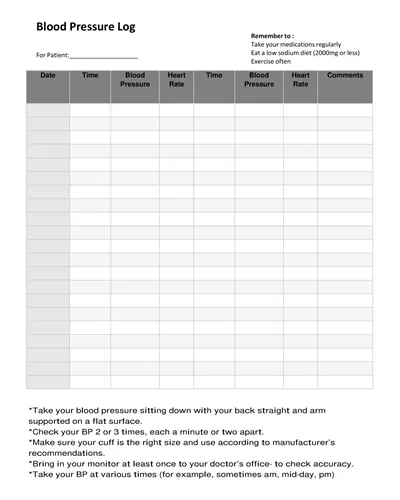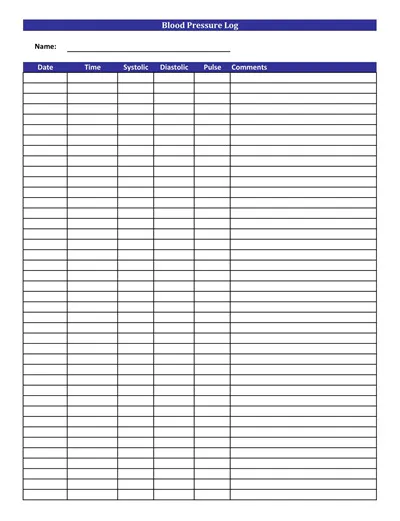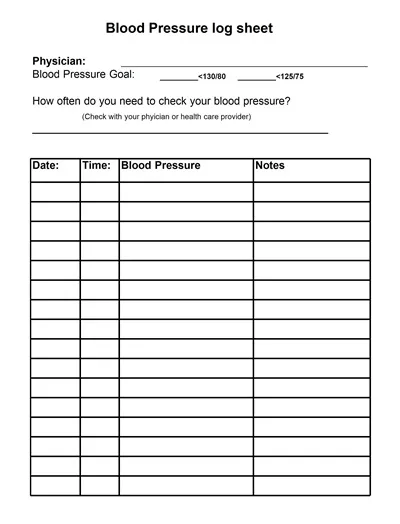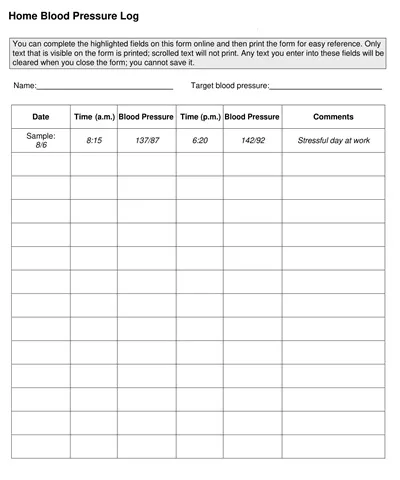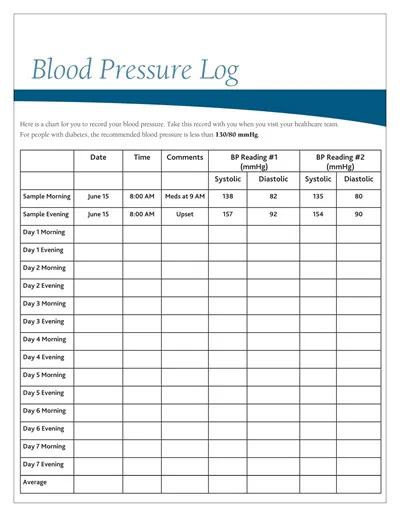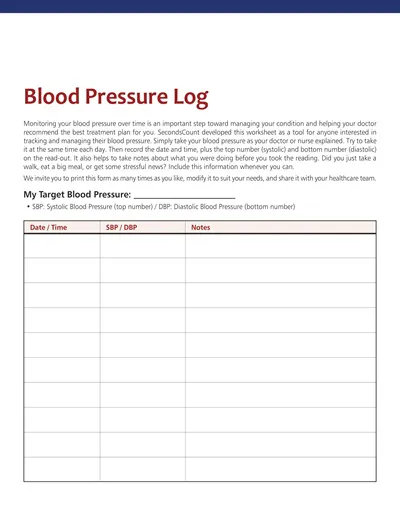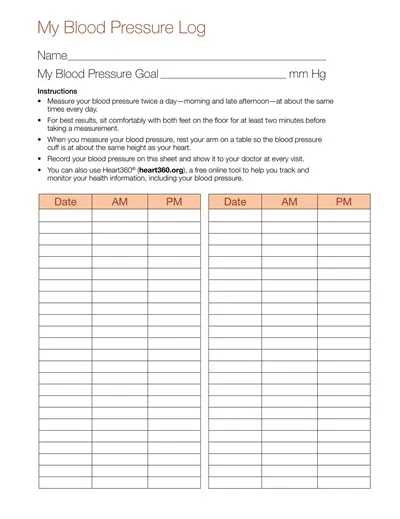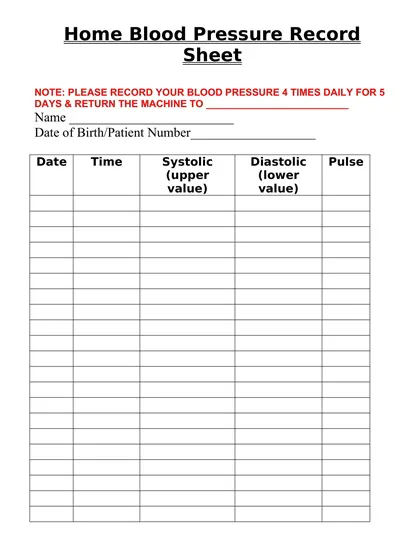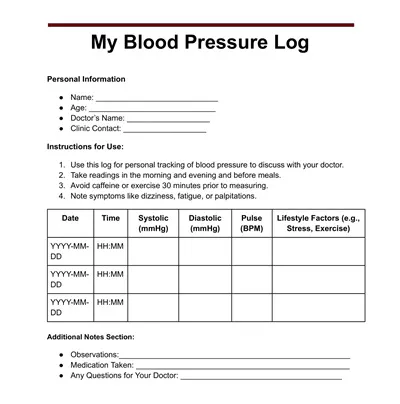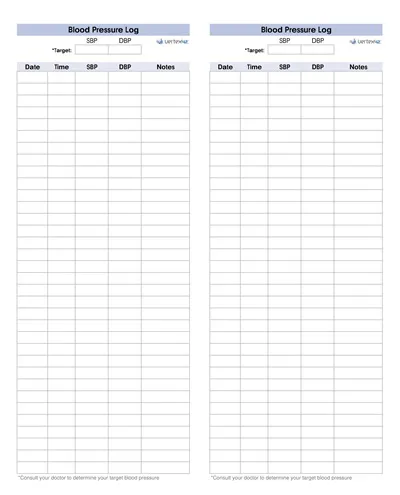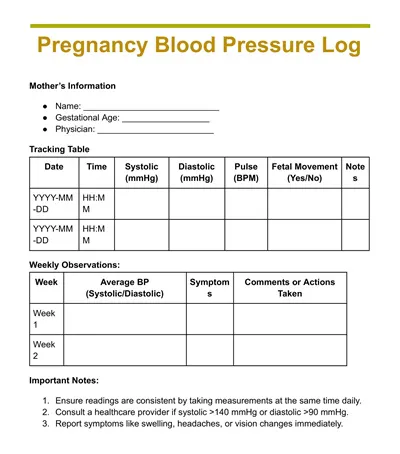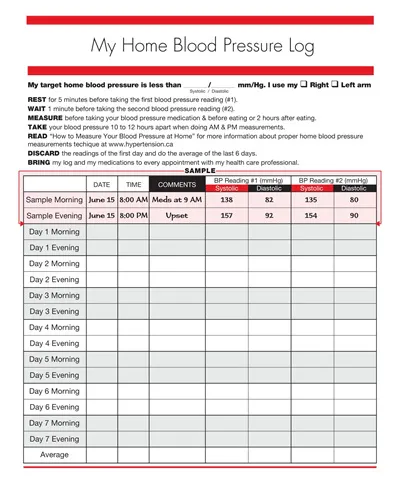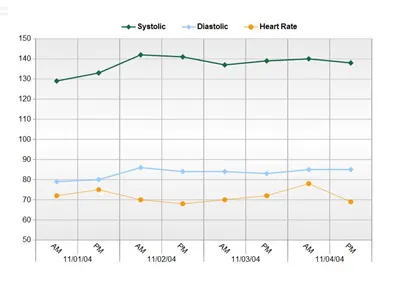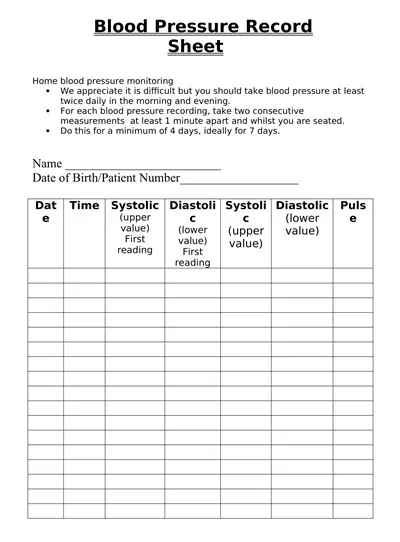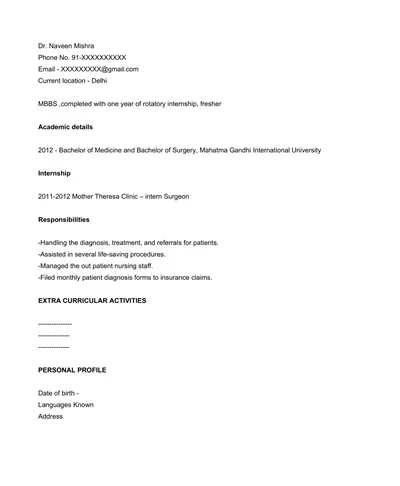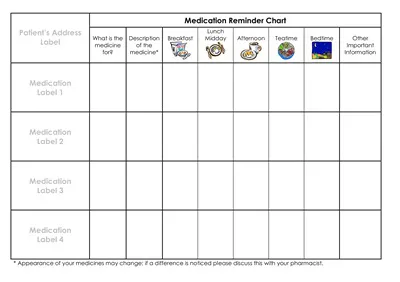A Blood Pressure Log Template is a defined system for people to organize consistent blood pressure measurement and documentation. This standardized template provides space to record date, time, systolic pressure (upper number), diastolic pressure (lower number), heart rate, and any noted symptoms.
Through a blood pressure log system, people can observe patterns in their readings better and present their readers to medical experts for accurate diagnosis. Regularly using a blood pressure log helps people better control their blood pressure while supporting heart health in general.
Download Free Printable Blood Pressure Log Templates
What is a Blood Pressure Log?
A blood pressure log tracks specific periods of an individual’s blood pressure readings through its systematic record system. The tool remains vital for people dealing with hypertension as well as hypotension and anyone wanting to achieve better heart health. The standard fields in a blood pressure log include the tracking of date, time, systolic and diastolic measurements, as well as pulse rate, together with patient observations about symptoms.
The provided log system creates an organized structure that helps identify patterns and therapy evaluations while presenting critical health data to medical providers. A blood pressure log enables people to enhance their participation in health management while creating practical knowledge about preventing health issues.
Key Features of a Blood Pressure Log
Such a blood pressure log includes important features which transform it into an efficient tool for monitoring blood pressure levels effectively. These features include:
- The Date and Time Entries section enables detailed noting of measuring times, which provides comprehension of daily blood pressure developments.
- A blood pressure log creates an exact record that shows both systolic and diastolic numbers, which gives complete cardiovascular health evaluations.
- Heart rate measurement appears as part of this tool to offer supplementary information about blood pressure readings.
- Observations or Symptoms serve as a section to document any symptoms or emotional or activity states during the blood pressure reading tests. This tracking assists in recognizing possible relationships between different events.
- The system includes optional medication tracking fields which enable users to log their medications to track treatment outcomes better.
- The format of blood pressure logs can be personalized by individuals since they can choose conventional pen-and-paper methods or electronic applications.
- The summary Section provides a compact space where individuals and healthcare providers can review overall progress.
- Digital logs nowadays have built-in alert systems to inform users about regular monitoring checks.
These features create a blood pressure monitoring device as a practical instrument for active health management.
Benefits of Using a Blood Pressure Log
Logging blood pressure generates various benefits for individual patients and healthcare professionals. An active approach to health management becomes possible when individuals track their blood pressure patterns through clear time-based insights that this log provides. The ongoing practice of tracking allows individuals to notice symptoms of hypertension and its related conditions at their earliest stages, thus facilitating prompt medical attention.
The documentation precision of monitoring blood pressure aids healthcare provider communications because it substitutes recalled information with proper medical records. People attain better treatment decisions and lifestyle adaptation choices through this method. A blood pressure tracking journal is a valuable tool for people who take medication because it helps their healthcare provider assess the success rate of their medication treatments. Logging helps people develop consistent patterns, resulting in lasting health benefits and improved personal well-being.
Uses of Blood Pressure Log
The blood pressure log provides essential functions to help with health management activities, making it an important resource for medical professionals and individual users. Below are some detailed uses:
1. Monitoring Daily Fluctuations
Regular blood pressure fluctuations occur during the day based on activities, dietary intake, and stress circumstances. An individual can spot lifestyle or environmental factors that affect their blood pressure by keeping daily logs that reveal patterns and trends in their numbers.
2. Supporting Clinical Diagnoses
Medical practitioners use detailed blood pressure logs to obtain a complete view of patient health evolution across several periods. The recorded information helps doctors diagnose hypertension, white coat syndrome, and other cardiovascular problems that do not appear during regular check-ups.
3. Evaluating Lifestyle Changes
Logging blood pressure measurements enables patients to assess the effects of their changes in lifestyle, including their eating habits, exercise routines, and stress reduction practices. One can evaluate blood pressure improvement through record comparisons between different time points.
4. Medication Management
Blood pressure medication effectiveness assessment becomes possible through a log system by patients who take these medications. Healthcare providers can make essential treatment changes, including medication type or dosage level, via real-time information provided by the blood pressure records.
5. Detecting Potential Complications
Damaged health indicators appear in blood pressure measurements as sudden increases or irregular patterns, which might point to kidney disease or stress-related medical conditions. People who maintain a log stand a higher chance of detecting warning signs early to receive proper healthcare treatment.
6. Enhancing Awareness and Accountability
A blood pressure log strengthens individual awareness about their health condition while fostering their accountability for its management. A blood pressure log helps people maintain responsibility for their health by showing them why they need to practice good habits for wellness and must visit their healthcare provider for regular check-ups.
How to Create a Blood Pressure Log Template
Anybody can easily make an effective blood pressure log template that fits their requirements. Developing a usable and practical log template demands three fundamental steps outlined below.
- Select between logging blood pressure through digital options or maintaining it on paper based on personal choices and availability considerations.
- The template must contain relevant fields that allow recording date and time followed by systolic and diastolic readings, pulse rate data, medications administered, and observations and summary notes.
- Additional capabilities should be considered depending on personal needs by implementing alert systems for digital logs and progress visualization through charts or graphs that work for electronic and traditional logging systems.
- Modify the log template by adding targeted areas for individual activities and blood pressure symptoms that affect results. The addition of various features allows health professionals to gain detailed information about wellness alongside medical indicators.
- The log should have easy access since it must be located digitally or physically so patients can use it for regular checks and their medical providers can access it during appointments.
Creating a customized blood pressure log becomes possible through this process, which helps individuals achieve better health management results.

